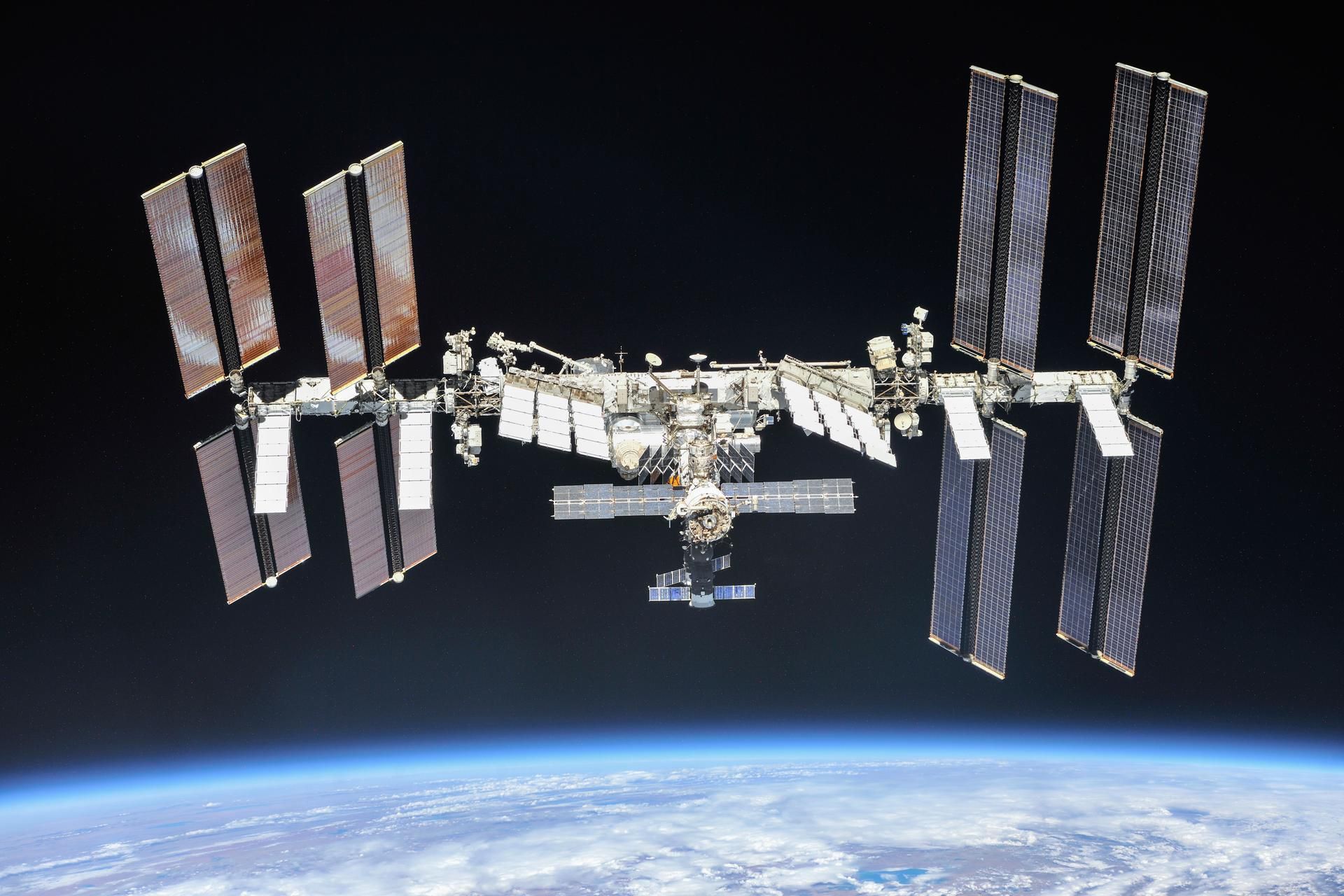Tech News
The ISS Has Fast Internet, but How Goods Their Online Gaming?
Key Takeaways
I've done the math, and there's about a 0.001% chance that NASA will, at some point, send a high-ranking Counter Strike player to the International Space Station. It's entirely within the realm of possibly. So, when our space-faring gamer reaches the ISS, will they be able to maintain their rank? You can probably guess the answer.
The ISS' Internet Is "Fast," but Not In a Conventional Sense
While the average American endures internet speeds of just 240Mbps, NASA astronauts are privy to a 600Mbps downlink. At least, that's the answer I got when Googling "how fast is internet on the ISS." Yes, the ISS recently doubled its internet speeds, but the 600Mbps figure doesn't refer to conventional internet access. Instead, it describes the data rate between the ISS and NASA's Earth-based servers. If we were to calculate the ISS' usable data rate for internet browsing, it would be far less than 600Mbps. And, in any case, nearly 100% of the ISS' bandwidth is dedicated to critical operations. The portion of bandwidth allotted for recreational purposes is incredibly small.
Technically speaking, you can play online games with a crappy internet connection. Desperate gamers do it every day. There's just one problem: astronauts do not have direct access to the public internet.
When an astronaut onboard the ISS wants to browse Facebook or some other website, they must do so through a remote desktop connection; they use one of the ISS' ThinkPads to control a computer located on Earth's surface. This obstacle mainly exists for cybersecurity purposes, though it may also help astronauts avoid timeouts and other issues that occur over a super-slow connection. Gamers-turned-astronauts could fire up Rocket League on their Earth-based computer and stream the game to the ISS, but the remote connection would be unusable. There'd be too much lag and stuttering.
Even If We Break the Rules, Astronauts Can't Play Counter Strike
For argument’s sake, let's pretend that a rogue astronaut has hijacked the ISS with the sole intent of playing Fortnite. All the bandwidth-hogging critical operations of the ISS have been halted, and the astronaut has somehow established a direct connection to the public internet—no more remote desktop nonsense, just 600Mbps straight to the dome.
This astronaut could install Fortnite on their government-sanctioned Lenovo ThinkPad. They'd be able to turn on the game and log into their account. But that's about as far as they'd get.
How does the ISS establish an internet connection? Well, it shoots lasers away from the Earth. These lasers are intercepted at high-altitude orbit—about 22,000 miles above sea level—by a system of Tracking and Data Relay Satellites (TDRS) that process the signal and shoot it down to Earth's surface. Of course, an internet connection isn't just a one-way street. Data also needs to travel up from Earth, into high-altitude orbit, and back down to the ISS.
Distance creates latency. So, the near-50,000-mile round trip of an ISS internet connection is plagued by ping. While we don't have an exact number here, a former NASA employee estimates that the ISS' connection suffers from at least 500ms and, at most, 1,000ms (a full second) of latency. Even if we round down to 500ms, that's still 25 times the average latency of a cable internet connection on Earth. Our astronaut wouldn't be able to play Fortnite in any serious way. In fact, their outrageously high ping would probably get them kicked from the game.
If we want to be generous, 500ms of latency might be tolerable in slow turn-based games. But our mutinous astronaut is more of an FPS fan, so let's just gloss over the turn-based thing and move on to more serious matters.
The ISS Will Be Gone Before Space-Based Gaming Is Possible
Years from now, we'll look into the night sky and find that it has been smothered by a veil of satellites. The ISS settled into a lonely orbit in 1998, but it now sits on a chaotic highway full of scientific equipment, GPS facilitators, and SpaceX's Starlink "constellation." The sanctity of our heavens is polluted by the debris of nearsighted progress. We are a truly unscrupulous people.
Wait a minute—why isn't the ISS using Starlink? SpaceX's satellites are within throwing distance of the space station, and Starlink internet boasts a latency of 25ms to 60ms. If we send our gamer astronaut a Starlink Mini, they could use it to play Fortnite!
This is a pretty reasonable idea. We can't replace the existing TDRS system with Starlink, as TDRS is already a key component of the satellites and rovers that we've jettisoned from the Earth's service. But we could use Starlink to supplement TDRS and give our beloved astronauts the online gaming experience that they deserve.
The problem, sadly, is that current Starlink infrastructure cannot support the ISS. This is mainly due to the speed at which the ISS orbits Earth—about 5 miles per second—and the relatively short distance between the ISS and SpaceX's Starlink constellation.
Starlink satellites are kind of like flashlights. Their "line of sight," so to speak, is a conical beam. This beam starts out very narrow, but by the time it reaches the Earth, it's wide enough to "see" a lot of base stations and satellite dishes. The ISS is just 100 miles below SpaceX's satellites, so it's in the most narrow part of that flashlight-like beam. And, to reiterate, the space station travels 5 miles per second. Establishing a connection between the ISS and Starlink would be like catching a mosquito while suffering from tunnel vision.
My explanation of Starlink is elementary at best, but it's good enough to get the point across. Starlink-to-ISS service would require an expensive overhaul of existing infrastructure. It would also reduce SpaceX's ability to serve terrestrial customers, as hundreds of Starlink satellites would be "distracted" by the challenge of tracking the ISS and handing off its connection every few minutes. NASA plans to decommission the ISS by 2031, so ISS-to-Starlink communication would be a waste. It's a total non-starter.
The mighty ISS—a source of many scientific and cultural "firsts"—will not be the first semi-permanent space dwelling to host a competitive Counter Strike player. That honor will go to one of the many space stations that are carrying the torch for the ISS. If we're placing bets, I'll put my money on China's Tiangong station (which has been operational since 2021) or the NASA-backed Axiom station (a yet-to-be commercial space station that will be tethered to the ISS until 2031).
When you subscribe to the blog, we will send you an e-mail when there are new updates on the site so you wouldn't miss them.


 NASA
NASA

Comments